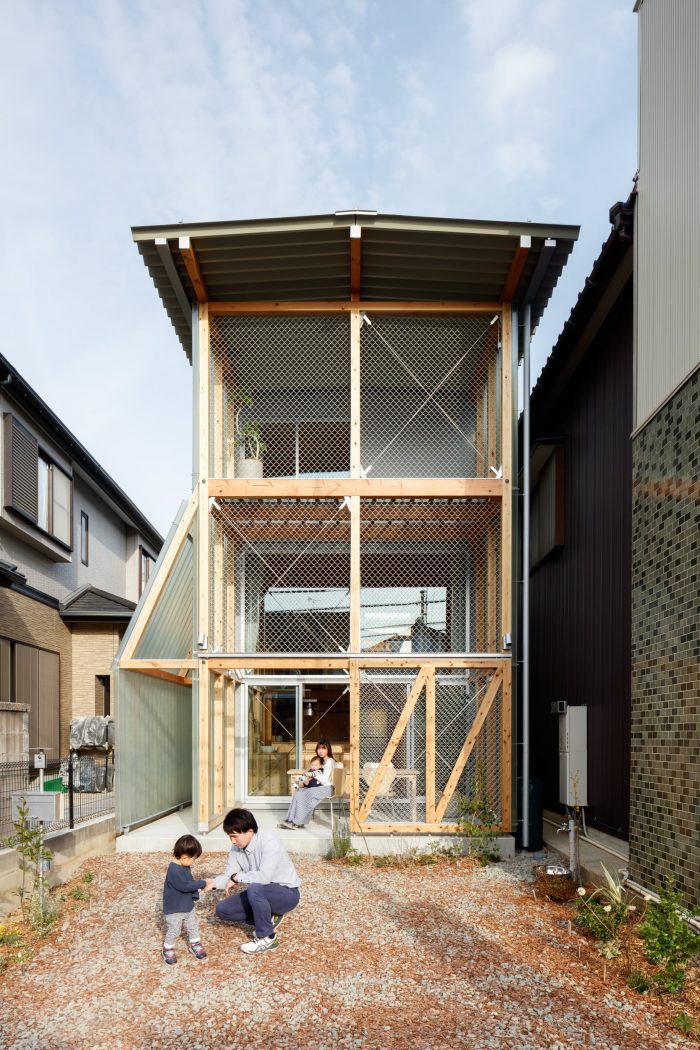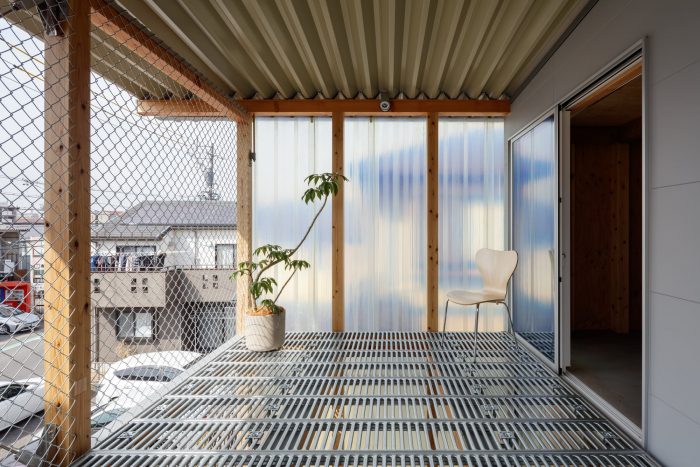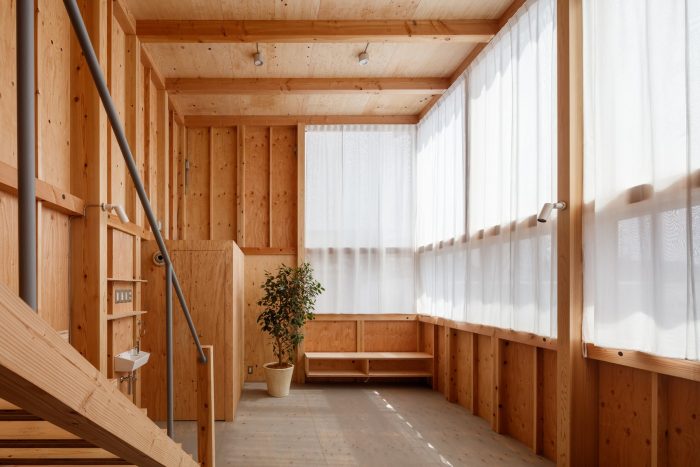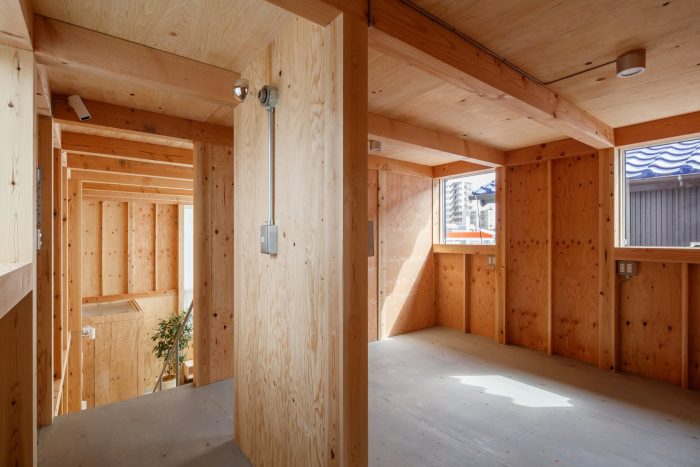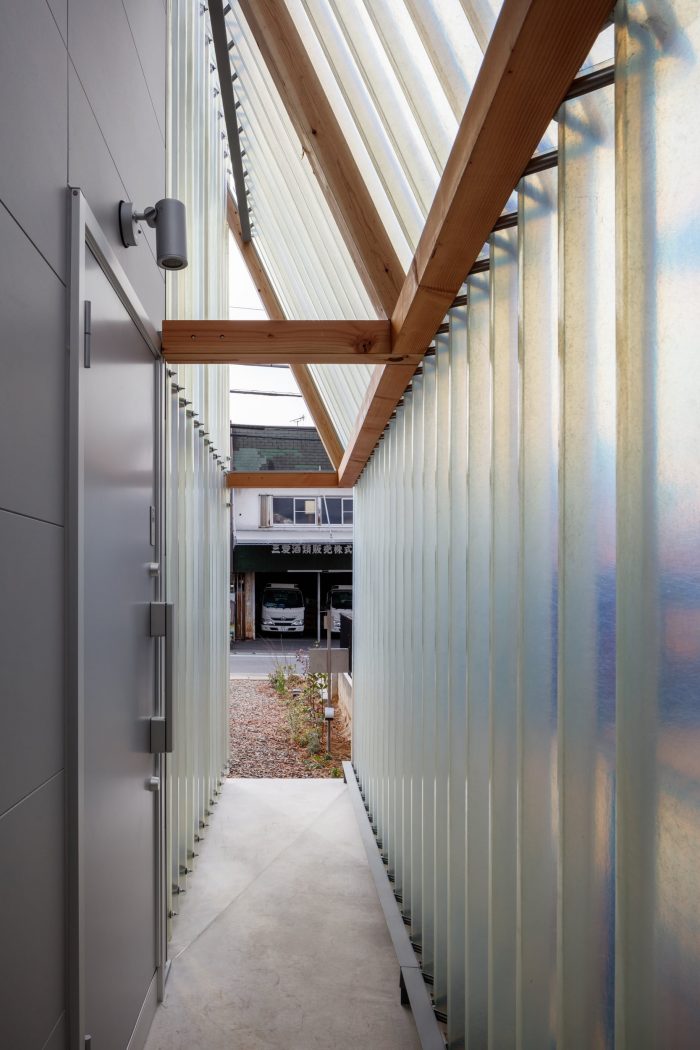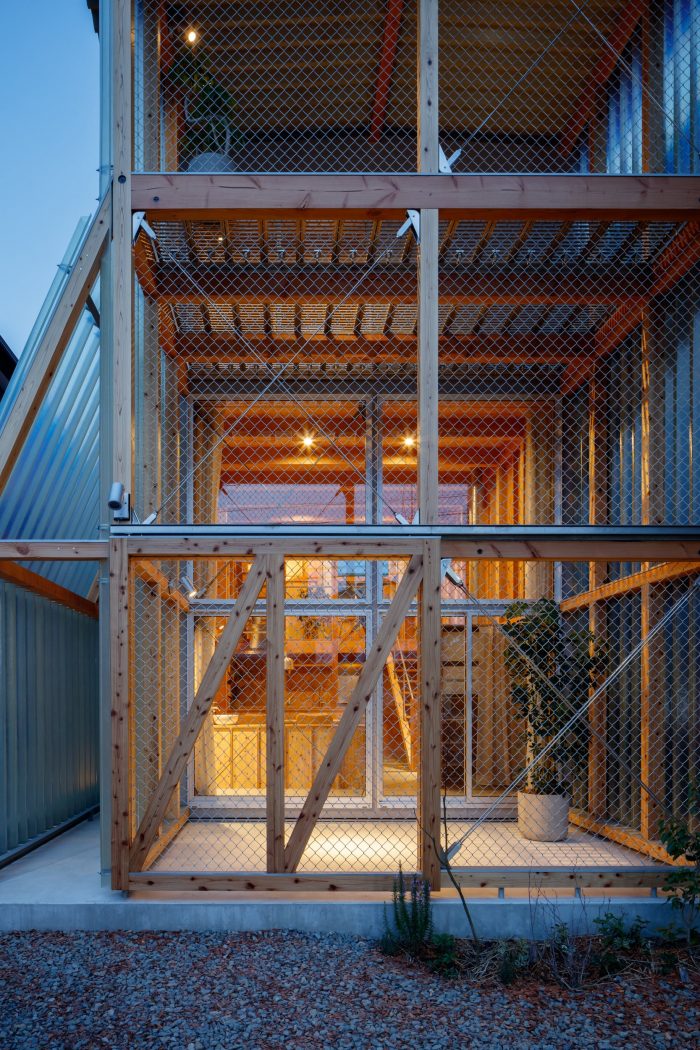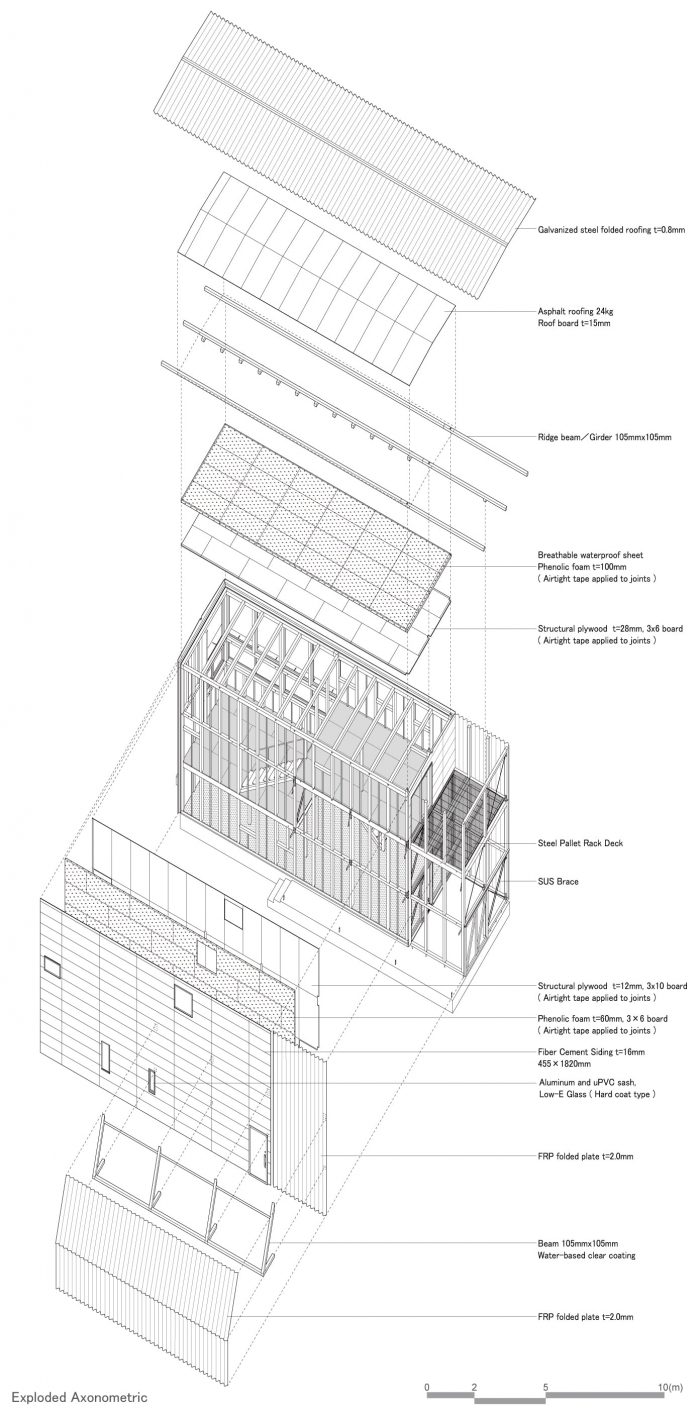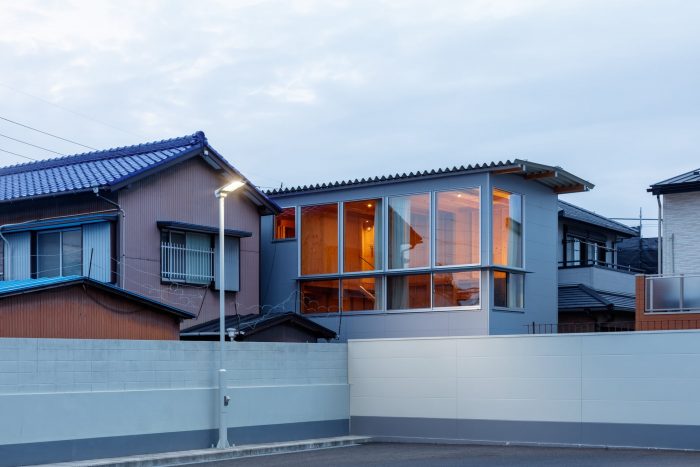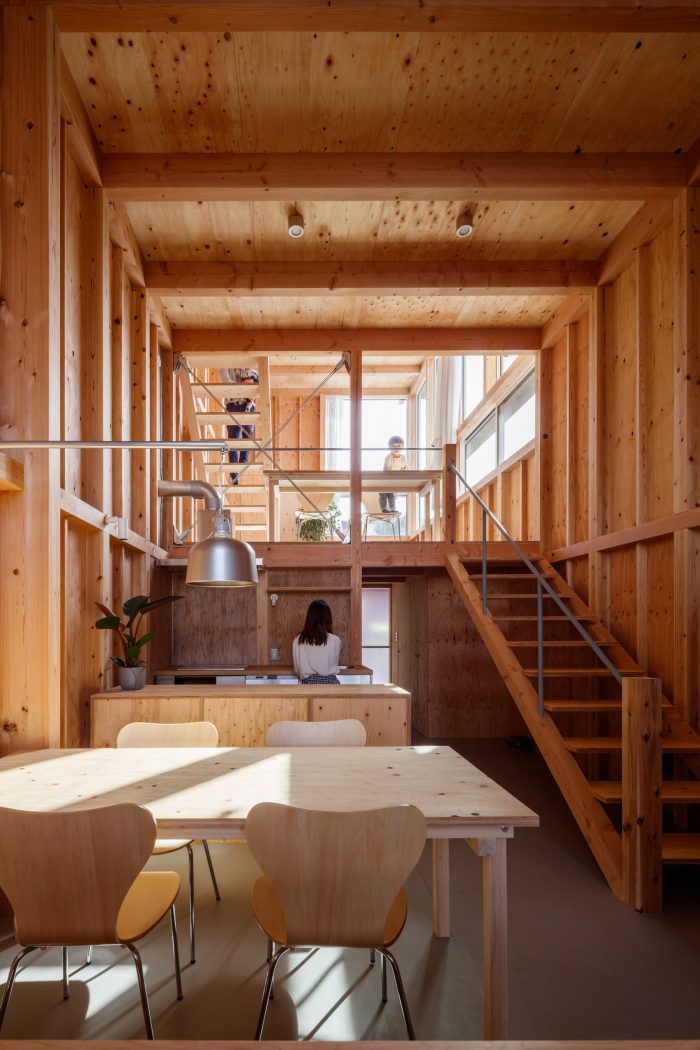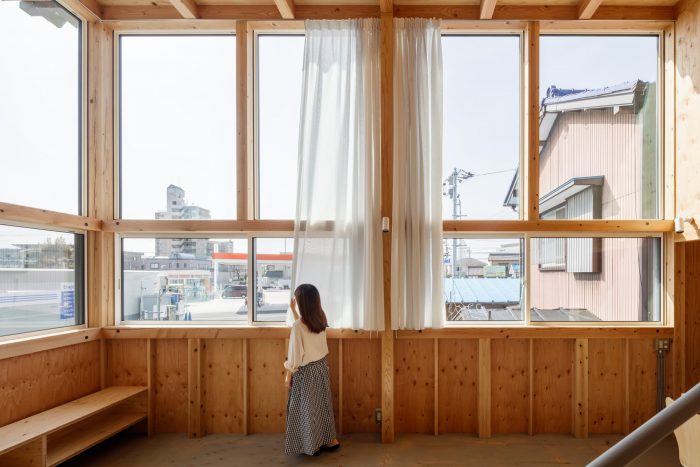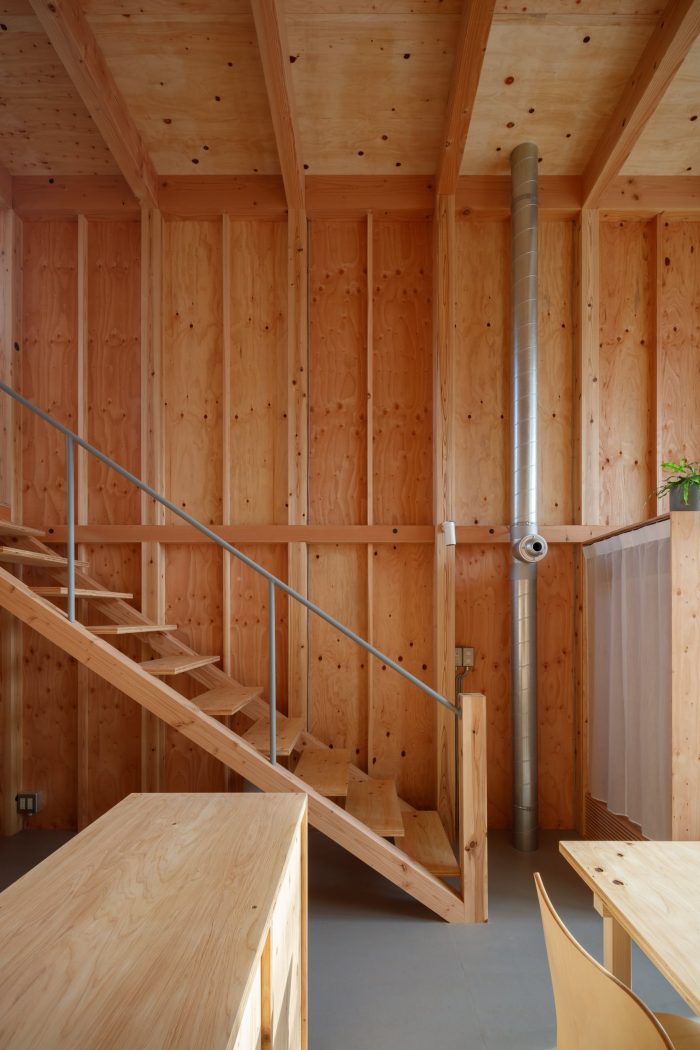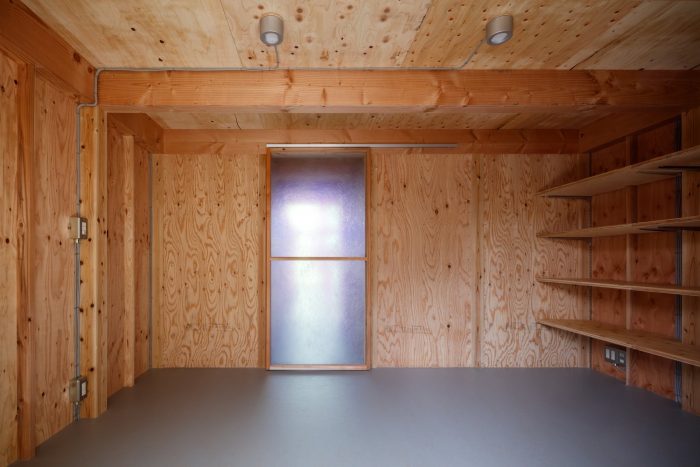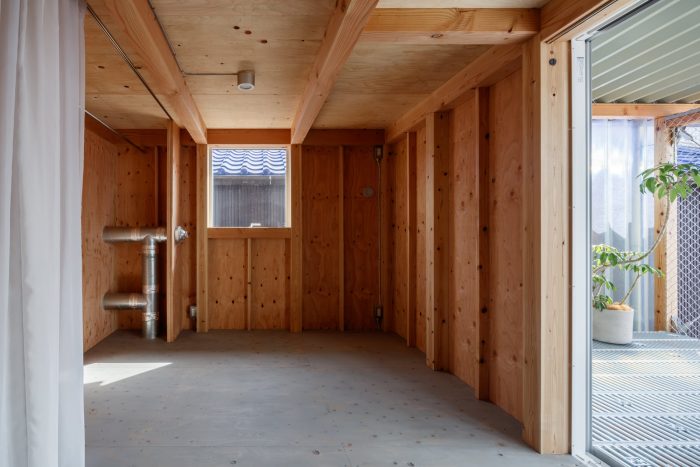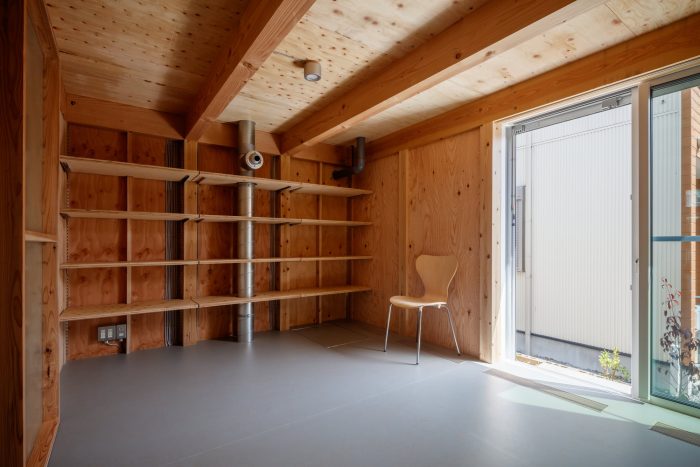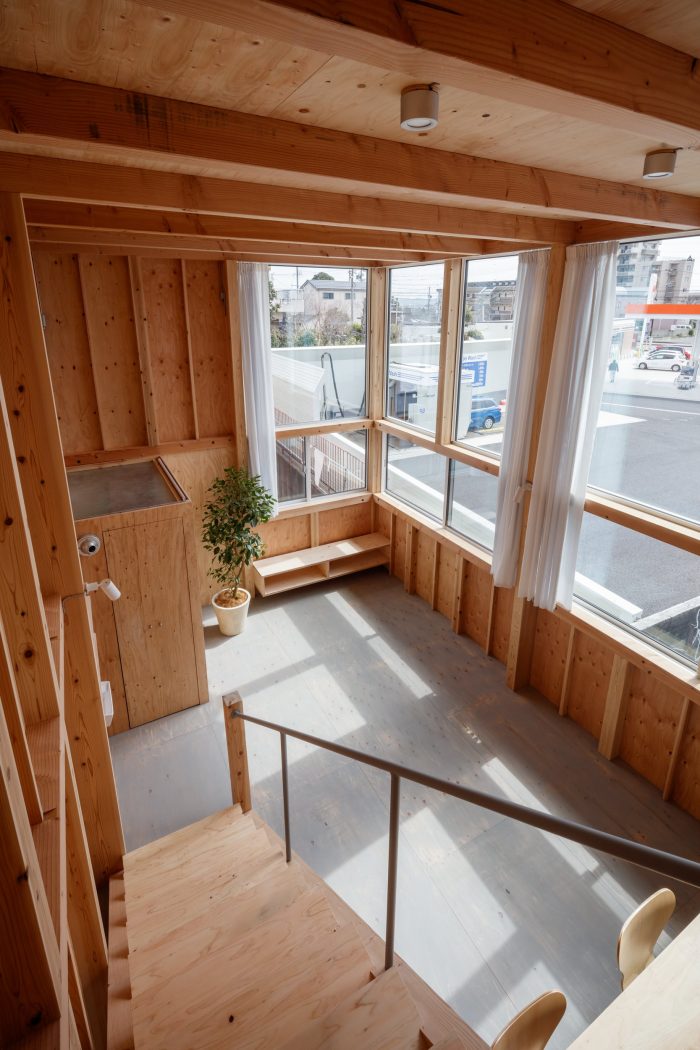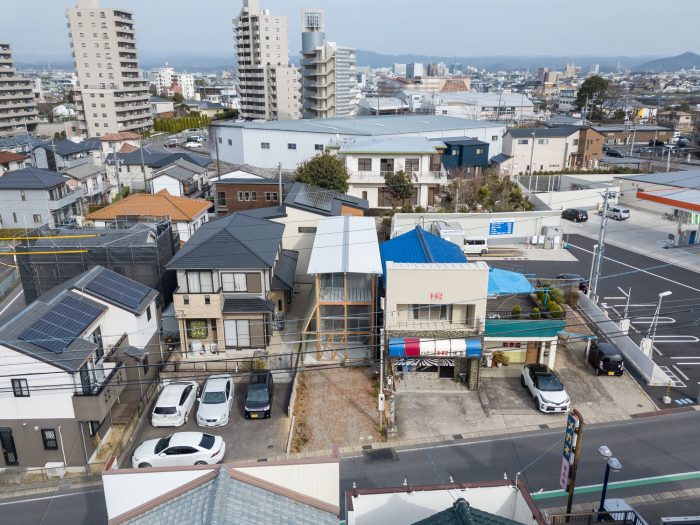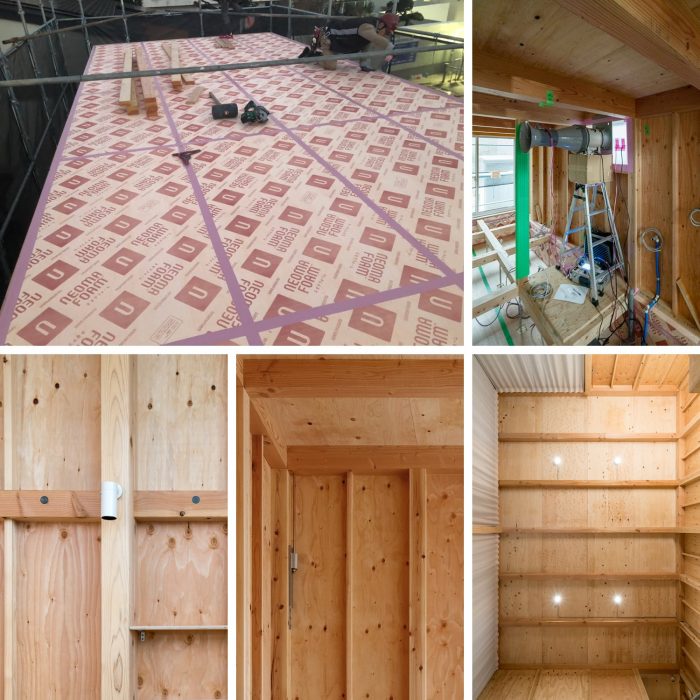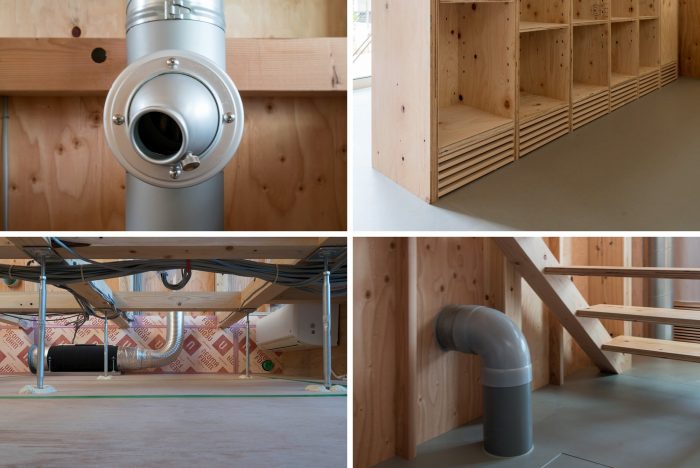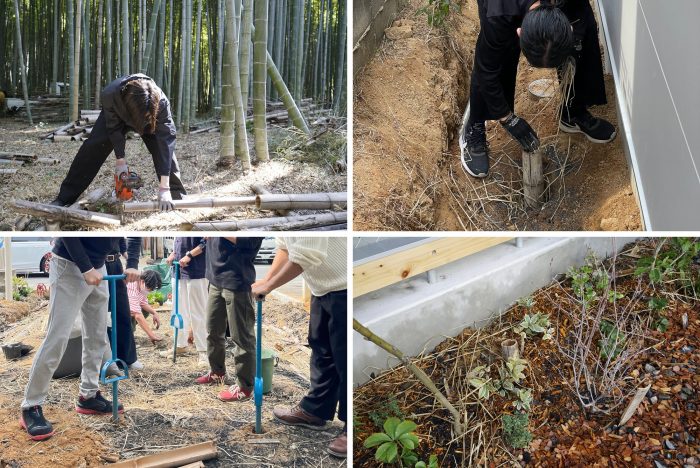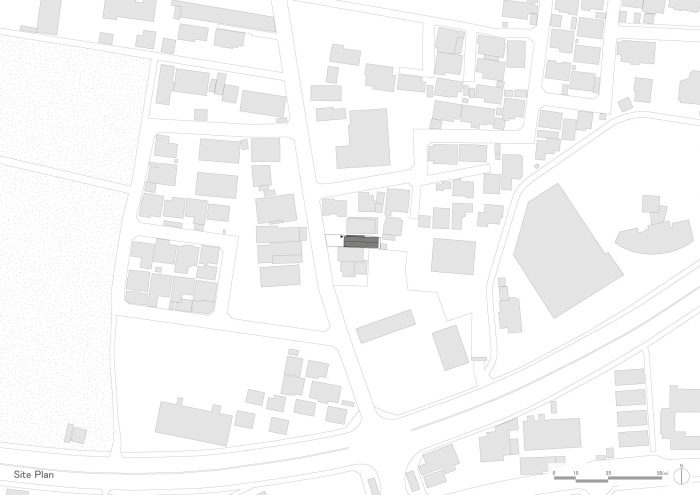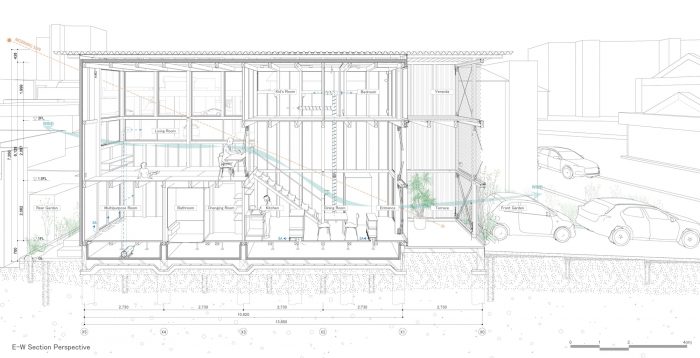城市住房的新原型 – 爱知县丰田市一对年轻夫妇和他们两个孩子的房子。位于东西方向的狭长场地上,道路西侧交通繁忙,南北两侧的建筑紧紧相邻,东南方向的二楼有一个宽阔的开口,可以看到天空。体量是一个紧凑的盒子,正面2肯(3.6米)x深度7.5肯(13.6米),总共15坪(50平方米)x2层=30坪(100平方米),高度约6米。客厅东南墙上的一个大窗户与城市的空隙相连。
A New Prototype of Urban Housing – A house for a young couple and their two children in Toyota City, Aichi Prefecture. Located on a long and narrow site east to west, there is heavy traffic on the west side of the road, buildings closely adjacent on the north and south sides with a wide opening to the sky in the southeast on the second floor. The massing is a compact box with a frontage of 2 ken(3.6m) x depth of 7.5 ken(13.6m) , 15 tsubo(50m2) x 2 floors = 30 tsubo(100m2) in total, with a height of approximately 6 m. The structure is divided into three levels. A large window on the southeast wall of the living room connects to the urban void.
沿着餐厅和厨房的街边的有盖阳台有一个网状的正面,侧面是半透明的墙,可以充分接触到变化的光线和风,同时与城市保持适度的距离感。为了确保全年的舒适性和能源效率,外部表皮和机械设备的设计都是为了舒适性和能源效率。在有限的预算内,我们设计了一些方法,通过彻底减少材料和低价设备的组合来确保高性能。
The covered terrace along the street side of the dining room and kitchen has a mesh front and translucent walls on the sides to allow full access to the changing light and wind while maintaining a moderate sense of distance from the city. To ensure year-round comfort and energy efficiency, the exterior skin and mechanical equipment were designed for comfort and energy efficiency. Within a limited budget, we devised ways to ensure high performance with a combination of thoroughly reduced materials and low-priced equipment.
我们通过使用外部绝缘材料和暴露出木质结构、底座、管道和线路,取消了内部装饰,创造了一个充满温暖的木质空间。 这使居民能够了解建筑的结构,并能自己进行维修和改造。这是一个在全球环境危机时代的城市住房新原型的建议,通过提供一个向内部(家庭)和外部(城市)开放的令人愉快的房子,充满光、风和自然材料,减少建筑材料和废物。
We created a warm wood-filled space by eliminating interior finishes by using exterior insulation and exposing the wood structure, base, piping, and wiring. This allows the residents to understand the structure of the building and to make repairs and modifications on their own. This is a proposal for a new prototype of urban housing in an age of global environmental crisis, by providing a delightful house open to the inside (family) and outside (city), full of light, wind, and natural materials, with less construction material and waste.
以低成本实现高抗震性、舒适的热环境和健康的土壤环境。通过在每层楼的短方向两端以适当的间隔放置结构胶合板和钢支撑的承重墙,实现了高抗震性能(3级),同时消除了跳层的变形差异,抑制了风压时的变形,并保证了空间的灵活性和透明度。三层楼的高度被降低到6米以下。屋顶的建造减少了部件的数量,通过利用外墙保温层上的3.5英寸方木和底板上的折叠屋顶和沥青屋顶。
Realization of high earthquake resistance, comfortable thermal environment, and healthy soil environment at low cost. By placing load-bearing walls with structural plywood and steel braces at appropriate intervals at both ends of each floor in the short direction, we achieved high earthquake resistance performance (Grade 3) while eliminating deformation differences in the skip floor and suppressing deformation during wind pressure, as well as ensuring spatial flexibility and transparency. The height of the three stories was reduced to under 6 m. The roof was constructed with a reduced number of components, by utilizing 3.5″ square timbers on top of the exterior insulation and a folded roof over baseboards and asphalt roofing.
这一策略有助于简化屋顶框架,并消除了对椽子的需求。通过使用外墙保温材料、高性能窗扇和屋檐,该建筑达到了很高的围护结构性能,UA值为0.49(ZEH+标准),ηAC值为2.2(高于节能标准)。通过设计通风路线,使用风扇和管道将暖/冷空气从一个地板下的空调分配到每个区域,以低成本实现了舒适的热环境。此外,整个场地,包括土壤,都通过在外部挖沟和洞,掩埋有机材料,让水和空气在土壤中流动的方式得到改善,即使是业余建筑商也能做到。
This strategy helped simplify the roof framing and eliminated the need for rafters. By using exterior insulation, high-performance window sashes, and eaves, the building achieved high envelope performance, with a UA value of 0.49 (ZEH+ standard) and an ηAC value of 2.2 (above the energy conservation standard). A comfortable thermal environment was achieved at a low cost by devising ventilation routes and using fans and ducts to distribute warm/cold air from a single under-floor air conditioner to each zone. In addition, the entire site, including the soil, was improved by digging trenches and holes in the exterior, burying organic materials, and allowing water and air to move through the soil in a way that is possible even for amateur builders.
Architects: Nori Architects
Area : 88 m²
Year : 2022
Photographs :Jumpei Suzuki
Lead Architect : Norihisa Kawashima, Nori Architects
Lighting Advisor : CHIPS LLC.
Constructor : TOKORO
Design Team : Norihisa Kawashima, Takuro Kunitomo
Structure Engineer : Seiji Okawa
Textile Designer : Yuki Tsutsumi
Equipment Advisor : Kozo Takase
Country : Japan



